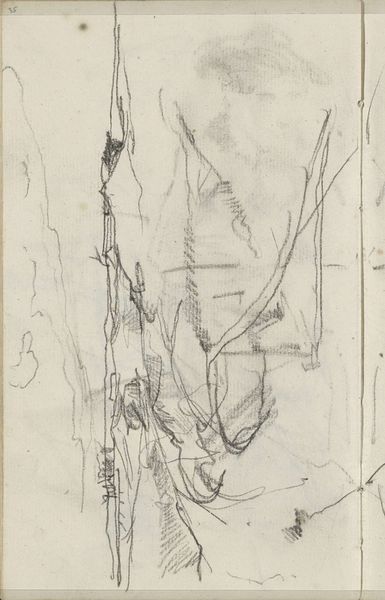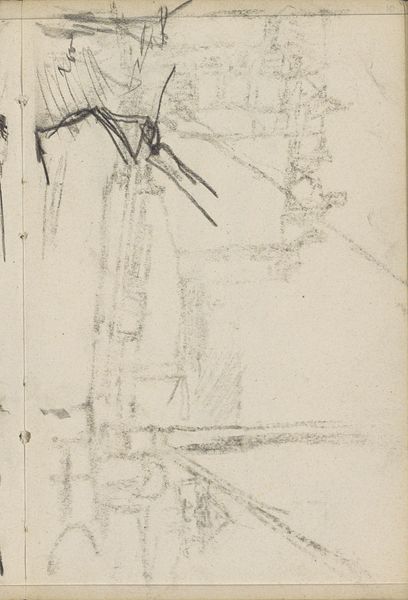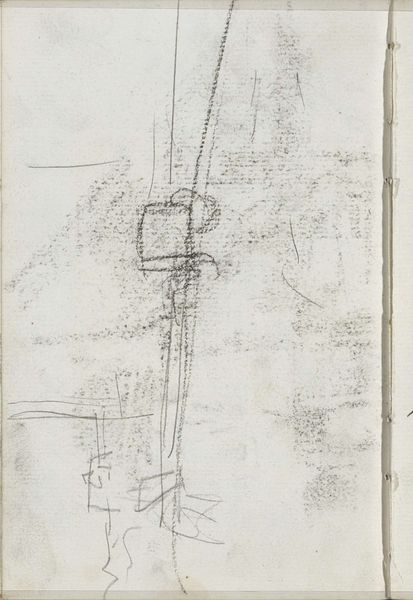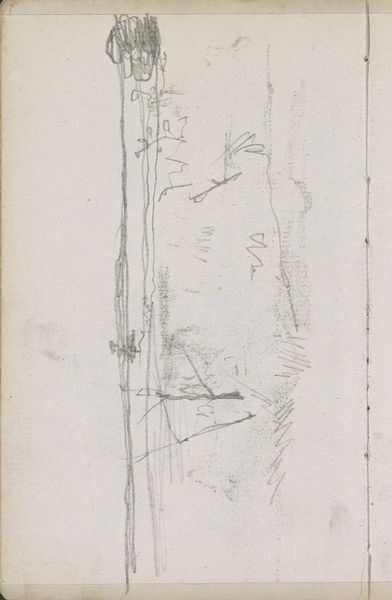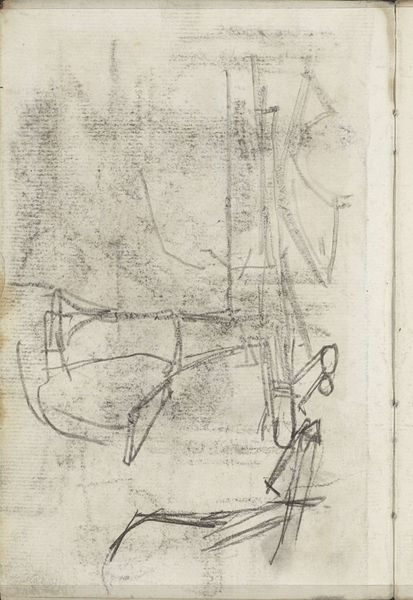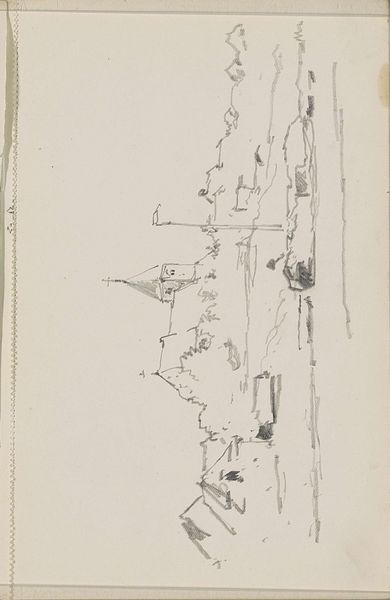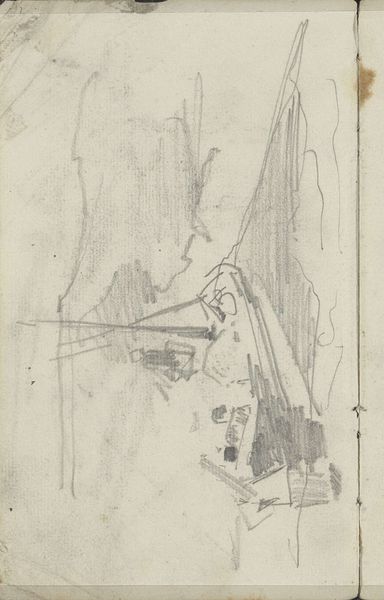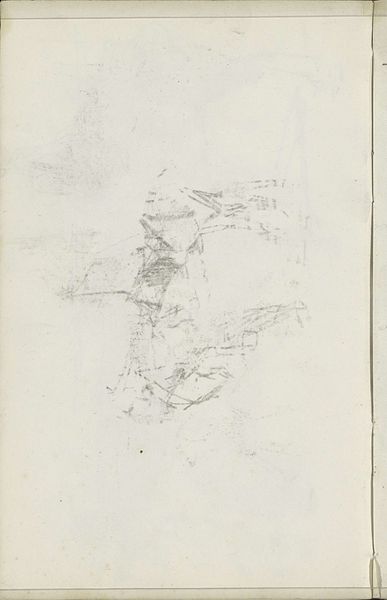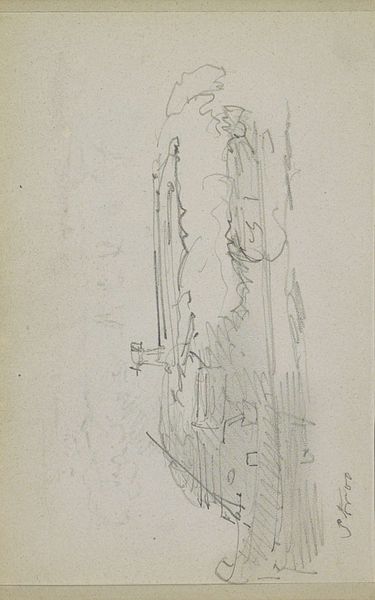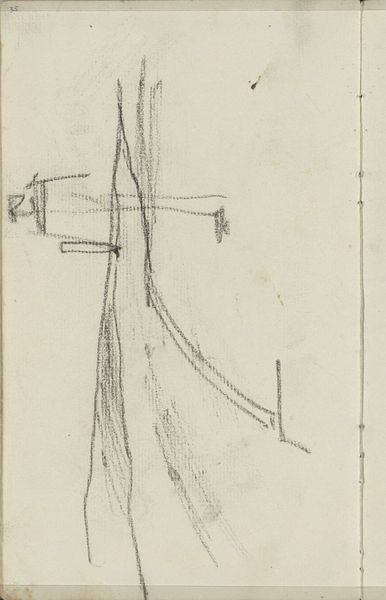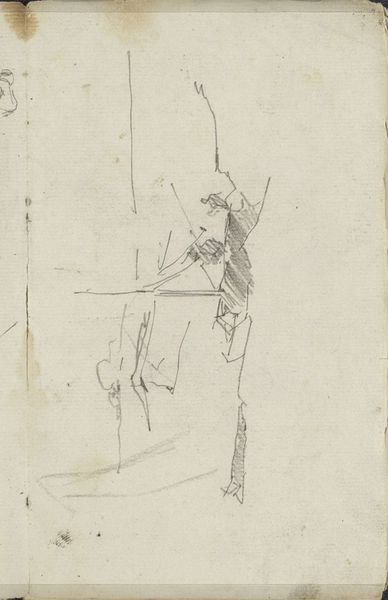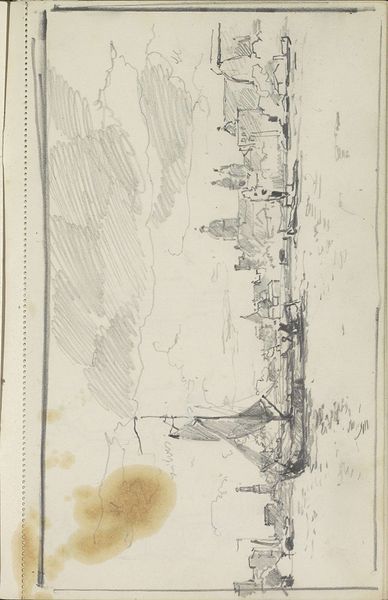
Studie, mogelijk van een schip voor een gebouw c. 1891 - 1894
0:00
0:00
georgehendrikbreitner
Rijksmuseum
drawing, paper, pencil, graphite
#
drawing
#
pencil sketch
#
landscape
#
paper
#
sketch
#
pencil
#
graphite
Copyright: Rijks Museum: Open Domain
Editor: Here we have George Hendrik Breitner's "Studie, mogelijk van een schip voor een gebouw", a pencil and graphite drawing on paper from around 1891 to 1894. It feels almost ghostly, a fleeting impression rather than a fully realized image. I'm curious, looking at the social climate of Amsterdam at the time, what role would sketches like this have played? Curator: That's a great question. Breitner was deeply involved in documenting the changing face of Amsterdam. Sketches like this one weren't necessarily intended as finished artworks themselves, but more as visual notes, a kind of urban field research. Consider the rapid industrialization and urbanization taking place. Breitner was capturing glimpses of a city in constant flux, its maritime past giving way to modern constructions. He was interested in the everyday life of the working class, as exemplified by his many sketches of women at work and leisure in the city. So this seemingly simple drawing speaks to a broader social and economic transformation, the city becoming increasingly industrialized with emerging urban spaces. Editor: So it's less about aesthetic beauty and more about... witnessing? Capturing a moment in time before it vanishes? Curator: Precisely. It also raises questions about the role of the artist in documenting social change. Was Breitner a detached observer, or was he consciously engaging with the social implications of urban development? His involvement with the Hague School places him firmly in a tradition of realism, focused on portraying the world as it is. What I would add is what and who he deliberately chooses to paint? These sketches are records and narratives. Editor: I never thought about a simple sketch as a record, I usually interpret them as art. It totally changes my perspective, seeing it as something socio-political and a document of change. Thank you! Curator: Exactly, understanding art in a social context truly enriches our viewing.
Comments
No comments
Be the first to comment and join the conversation on the ultimate creative platform.
